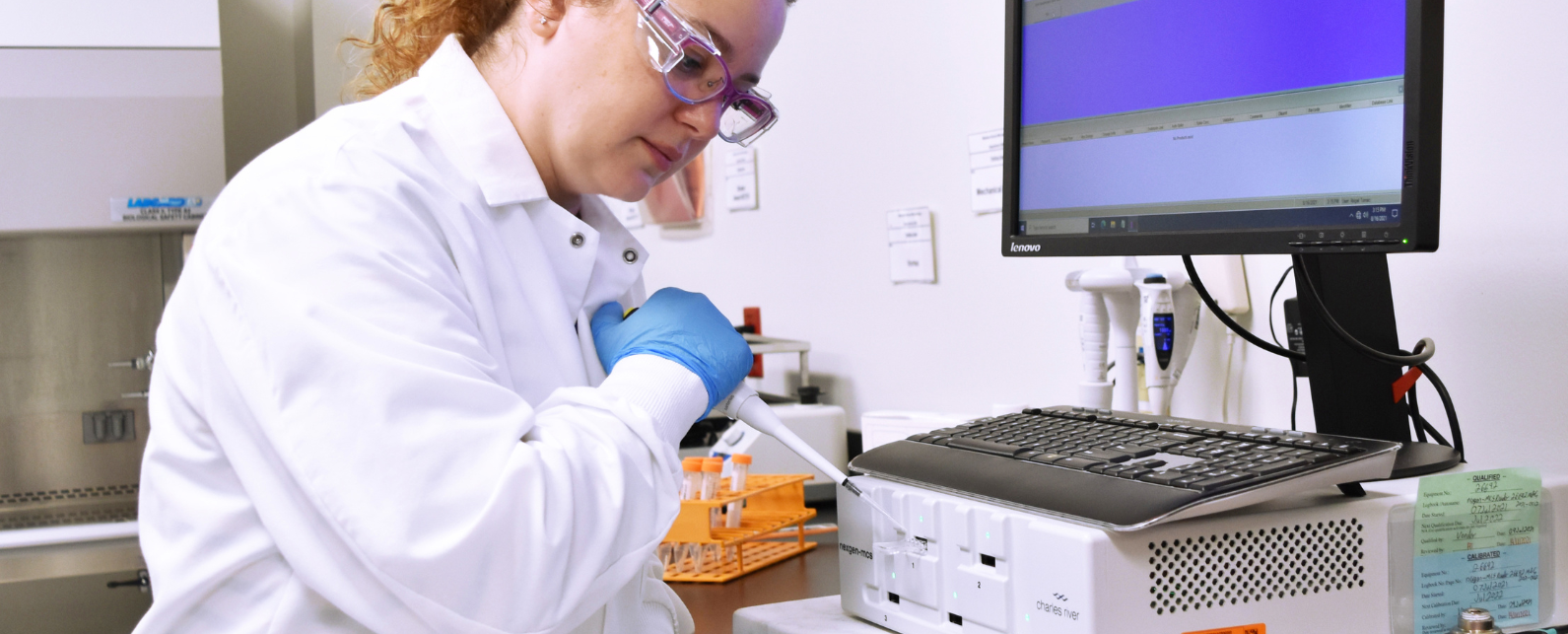
- No Results
- Global
-
Australia

-
Austria

-
Azerbaijan

-
Brazil

-
Belgium

-
Canada

-
Chile

-
China

-
Costa Rica

-
Croatia

-
Czech Republic

-
Denmark

-
ESTONIA

-
Finland

-
France

-
Germany

-
Hong Kong

-
Hungary

-
India

-
Italy

-
Ireland

-
Japan

-
Korea

-
Latvia

-
Lithuania

-
Malaysia

-
Mexico

-
Morocco

-
Netherlands

-
New Zealand

-
Norway

-
Philippines

-
Poland

-
Portugal

-
Romania

-
Singapore

-
Slovakia

-
Slovenia

-
Spain

-
Sweden

-
Switzerland

-
Taiwan

-
Turkey

-
United Kingdom

-
UNITED ARAB EMIRATES

-
United States

-
Vietnam

Bacterial Endotoxin/LAL Testing
Contact usEndotoxins are the most common pyrogen found in medical devices and can pose a significant risk to patients if left undetected. High levels of endotoxins can enter the bloodstream through a medical device, causing adverse reactions such as haemorrhagic shock, diarrhoea, meningitis, fever, altered resistance to bacterial infection, rapid drop in blood pressure and numerous other severe biological effects.
The Bacterial Endotoxin Test, or Lumulus Amebocyte Lysate (LAL) Test, quantifies endotoxins that are part of the cell wall of gram-negative bacteria. Performed as a lot release test, the Bacterial Endotoxin or LAL Test assesses medical devices coming in contact with cerebrospinal fluid or the cardiovascular system.
Any device that comes in direct or indirect contact with intravascular, intralymphatic, intrathecal and/or intraocular systems must undergo bacterial endotoxin testing to confirm the device’s endotoxin content is below the device specification.
Choose Eurofins Medical Device Testing to help you:
- Understand Bacterial Endotoxin/LAL Testing
- Meet regulatory requirements for USP Chapter <85> and <161>
- Select the most appropriate method for your specific device
- Ensure the safety of every lot released
Reference Methods
Eurofins Medical Device Testing network of laboratories' methods follow the most current requirements outlined in:
- ANSI/AAMI ST72
- USP/NF <161> and <85>
- Ph Eur 2.6.14. Method A, C, and D
LAL Testing Panel
- Kinetic Chromogenic:Using the kinetic chromogenic test, a sample is mixed with lysate. In the presence of endotoxins, the lysate reacts with the endotoxin, resulting in a chromophore release from a chromogenic peptide. The onset time needed to reach a predetermined absorbance of the reaction mixture is recorded by a microplate reader. The endotoxin content in the sample is calculated in consideration of the corresponding data from a predefined endotoxin standard.
- Gel Clot: Equal amounts of test sample and lysate are mixed in a tube and incubated. After incubation, the tube is inverted. If endotoxin is present, the solution will clot, and the gel will remain at the bottom of the tube.
- Kinetic Turbidimetric: Using the kinetic turbidimetric test, a sample is mixed with lysate. In presence of endotoxins the turbidity of the sample mixture increases. The onset time needed to reach a predetermined absorbance of the reaction mixture is recorded by a microplate reader. The endotoxin content in the sample is calculated in consideration of the corresponding data from a predefined endotoxin standard.


